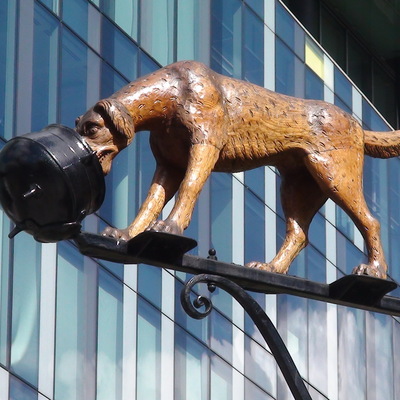Born, son of Elizabeth and John Dickens, at No.1 Mile End Terrace, Landport, Portsmouth (where there is a museum). For a map showing many of his London addresses see Londonist. His family were so peripatetic that he had lived in at least 17 places by the time he was 22 and moved out.
Dickens wanted to be buried in Rochester Cathedral but instead we find him in Poets' Corner, Westminster Abbey, with the inscription: 'He was a sympathiser to the poor, the suffering, and the oppressed; and by his death, one of England's greatest writers is lost to the world.' His will specified: 'I conjure to my friends on no account to make me the subject of any monument, memorial or testimonial whatsoever.' Despite this stipulation there is a statue in Sydney and a life-size 1891 bronze by Francis Edwin Elwell in Philadelphia and, in 2014 (late for the 2012 celebrations) a statue by Martin Jennings was unveiled in Portsmouth. Digital Journal in 2011 has more to say about Dickens statues. And what would Dickens have said about all the plaques? But the Portsmouth statue-erectors argue that Dickens' ban on memorials was "just him talking about funeral arrangements" and they point out that he sat for several sculptors.
Lots to read by Dickens and about Dickens but we'd recommend one academic detective novel, about the research that led to the listing, and saving, of the Cleveland Street Workhouse, the one that almost certainly inspired Dickens to write 'Oliver Twist'. Dickens and the Workhouse by Ruth Richardson.
2016: Londonist keeps returning to Dickens and here is surely the last word in Dickens mapped.
2022: Londonist have found another spin: Did Charles Dickens Ever Ride On The London Underground?
2023: This image is Charles Dickens by Margaret Gillies, 1843, courtesy of the Charles Dickens Museum.
















Comments are provided by Facebook, please ensure you are signed in here to see them